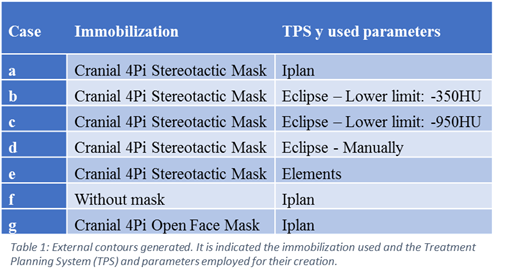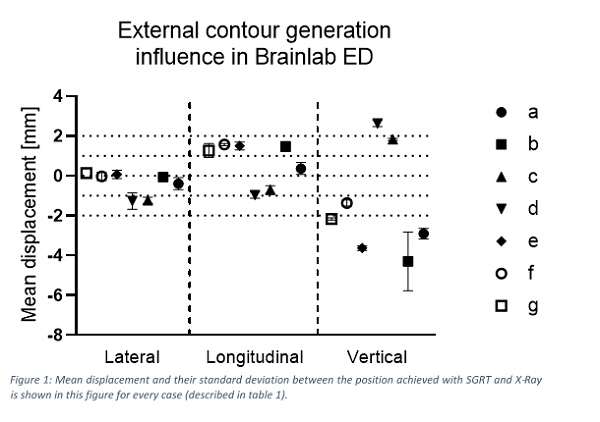External contour optimization and its influence on Brainlab Exactrac Dynamic
PO-2028
Abstract
External contour optimization and its influence on Brainlab Exactrac Dynamic
Authors: Rodrigo Astudillo1, Rosa Fabregat Borras1, Fernando Gomez Enriquez1, Pilar Itziar Valverde Pascual2, Mario Martin Veganzones2, Samuel Ruiz Arrebola1, Marina Gutierrez Ruiz1, Jorge Alonso Muriedas1, Uriel Alexander Corro Verde1, Veronica Cañon Garcia1, Javier Tomas Anchuelo Latorre1, Maria Teresa Pacheco Baldor1, Maria Ferri Molina1, Paola Andrea Navarrete Solano1, Ana Reguilon Martin3, Guillermo Camacho de la Vega3, Diego Bruzos Lopez1, Mara Garcia Lamela1, Frandeina Pinto Guevara1, Javier Albendea Roch1, Ana Laura Rivero Perez1, Jose Andres Vazquez Rodriguez1, Juan Ignacio Raba Diez1
1Hospital Universitario Marqués de Valdecilla, Radiation Oncology department, Santander, Spain; 2Hospital Universitario de Cruces, Medical Physics and Radiation Protection Department, Barakaldo, Spain; 3Hospital Universitario Marqués de Valdecilla, Radiation Protection Department, Santander, Spain
Show Affiliations
Hide Affiliations
Purpose or Objective
The aim is to optimize the setting up of the patient's external contour used in pre-positioning with surface guided Brainlab Exactrac Dynamic (ED) system. External contours are employed by ED as surface reference to compare the acquired surface during the patient pre-positioning. For this purpose, external contours have been generated with different Treatment Planification Systems (TPS). Precision and accuracy were analysed.
Material and Methods
A Brainlab Exactrac Dynamic System installed on a Varian TrueBeam STX lineal accelerator was employed; as well as Brainlab Cranial Verification Phantom, the immobilisers 4Pi stereotactic mask and 4Pi open face mask. External contours were created from the images generated in a General Electric Lightspeed computer tomograph using Varian Eclipse™, Brainlab IPlan™ and Brainlab Elements™ as TPS.
After performing the different immobilisations to the phantom, simulation images were taken and used in the TPS to generate the external contour with different thresholds of Hounsfield Units (HU). A total of 7 cases were performed, which are described in table 1.

The ED was used to position the phantom as SGRT system. It uses structured light projection for pre-treatment positioning, achieving the final position by means of the stereoscopic X-ray system. System accuracy was analysed as the difference in positioning between the two systems. This process was repeated 3 times.
Results
The figure 1 shows the mean displacement obtained between the position achieved by the SGRT system and by the stereoscopic X-ray. In all cases, the difference on the vertical axis was greater than 1,0 mm. In addition, it is observed an accuracy under 1,0 mm in cases a, b, e, f and g on the lateral axis. In the longitudinal axis is under 1,0 mm only in cases a and c. Regarding to repeatability, the position achieved by the SGRT system, a standard deviation of more than 0,5 mm was found for any case and axis, except for case b.

In the case of displacement vector, any case had an accuracy under 2,0 mm. Furthermore, the repeatability, calculated as the combination of the standard deviation of every axis for each case, was found to be less than 0,5 mm in all cases except b (1,4 mm).
Conclusion
We have analysed how different external contours influence the performance of ED for pre-positioning, finding a deviation between the position achieved by the structured light and by the stereoscopic x-ray, remarking a global accuracy over 2,0 mm in all cases. Consequently, a proper external contour is necessary when ED is used exclusively with its SGRT system due to the influence of the external body in the pre-positioning.